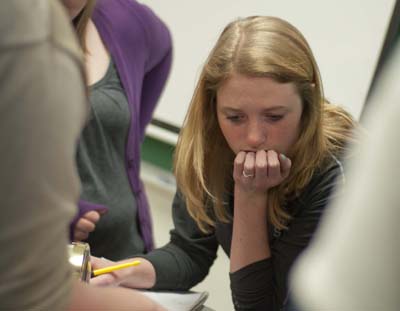
The Inquiry into Radioactivity materials use a guided inquiry approach. Students sit in groups of two to four and most of the class time is spent with groups working through guided activity documents on computers.
The role of the teacher is different from in a traditional classroom. The teacher's job is to monitor and manage the groups' work - the teacher asks questions but allows the students to answer key questions about radiation. The teacher sets the schedule for each day's activities but allows the student groups to grapple with questions at their own pace.
The IiR materials are broken into four main topic areas - Radiation basics, Atoms and radiation, Radiation and matter and health effects, and Nuclear waste, nuclear reactors, and half lives. Each topic is the subject of a "cycle" of activities that begins with finding out student initial ideas. This is followed by a series of "development" activities in which students address specific questions by doing particular experiments under the guidance of electronic documents. The cycle closes with a set of Main Questions which the students are now able to answer. A whole class discussion on the main questions is closed with the students receiving a document containing the main ideas for the cycle.
The students are driven by questions about what is going on - what radiation is - where it comes from - how it does harm - and they eventually answer their questions.
Although we believe that the greatest improvement in understanding will happen through following the complete IiR materials, we know that learning goals may be different. Also, resources (including time) may not be available. You are free to use the IiR materials however you are able and in ways that make sense to you. IiR offers useful strategies for helping students overcome learning difficulties, a sequence of activities that have been shown to work, and powerful simulators that enable experiments with atoms, ionization, and ionizing radiation.

